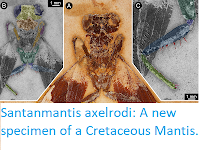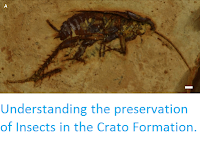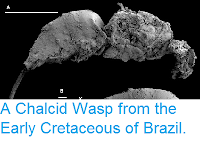A wide variety of vascular plants produce fluid exudates such as resins and gums, with each group differing in chemical definitions. Due to similarity in physical appearance distinguishing exudates based on chemistry is vital, for example gums and resins are visually similar resulting in these terms being used interchangeably. However, their chemical definitions are very different; resins are composed of lipid-soluble terpenoids, while gums are complex, highly branched (non-starch) water-soluble polysaccharides. A common example of this misunderstanding is the Eucalyptus, which is known as a Gum Tree, but nuclear magnetic resonance analysis of the Eucalyptus exudate shows its composition to be polyphenolic and is therefore actually a kino (i.e. neither a gum nor a resin, bt closer in composition to resins). Differences between gum and resin can also be seen in the functional roles within the plant. The main roles of resins are to respond to wounding, as a defence against pathogens and to dissuade herbivory by Insects and other organisms. Gum is involved in food storage, structural support, and also for wound sealing, but there is no common role across taxa. Further confusion arises as some plants, e.g. Boswellia and Commiphora species, even produce exudates with a mixture of polysaccharide and resin components (the gum resins Myrrh and Frankincense respectively). Until now only fossilised plant resin (ambers) and latex filaments have been reported preserved in the fossil record. While the fossilisation of fluid exudates might seem unlikely, the fossilisation of resin is relatively common, and extends back some 320 million years to the Carboniferous, but chemically confirmed gums have never been reported.
In a paper published in the journal Scientific Reports on 25 February 2020, Emily Roberts of the School of the Environment, Geography and Geosciences at the University of Portsmouth, and the Department of Palaeontology at the University of Vienna, Leyla Seyfullah, also of the Department of Palaeontology at the University of Vienna, Robert Loveridge, also of the School of the Environment, Geography and Geosciences at the University of Portsmouth, Paul Garside of Conservation Research, at the British Library, and David Martill, again of the School of the Environment, Geography and Geosciences at the University of Portsmouth, describe the first known incidence of preserved gum in the fossil record, in a preserved Welwitschiacean leaf from the Early Cretaceous Crato Formation of Brazil.
The Early Cretaceous (approximately 120 million year old) Crato Formation utcrops on the northern flanks of the Chapada
do Araripe, a plateaux on the border between Ceará, Pernambuco and Piauí States
in northern Brazil. In is noted for the exceptionally well preserved fossils from the Nova Olinda Member,
which include Dinosaurs, Crocodiles, Fish, Pterosaurs, Crustaceans, Arachnids,
Plants and most notably Insects, which are present in large numbers, often
showing exceptional preservation hese Insects are of particular interest as
they date from a time in the Early Cretaceous when Flowering Plants were
rapidly diversifying, and relationships between Insect and Plant groups that
would come to dominate the Earth’s terrestrial biology were being formed.. Investigations of different groups of fossilized Animals from the Crato Formation show that they are preserved as various mineral replacements, and their preservation was microbially-mediated.
Stratigraphy of the Crato Formation. Stratigraphy of the Araripe Basin indicating the fossil bearing laminated limestones of the Nova Olinda Member of the Crato Formation. Roberts et al. (2020).
Amber has also previously been reported from the Crato Formation Lagerstätte, inside fossil plant remains and as isolated clasts, and is attributed to Conifers. The fossil leaves occur as compressions showing at least some three-dimensionality. An amber-coloured substance is visible in some of the fossil leaves of Welwitschiophyllum brasiliense from the Crato Formation.
Fossil Welwitschiophyllum leaves from the Crato Formation, Brazil showing three- dimensional preservation. (a) Complete Welwitschiophyllum leaf (UOP-PAL-MC0002). Showing three dimensionality. (b) A magnified view of Welwitschiophyllum (UERJ 14-P1) showing that the leaf is preserved three dimensionally with distinct parallel leaf tissues. Scale bars, (a) 10 mm (b) 5 mm. Roberts et al. (2020).
Welwitschiophyllum is considered a relative of the extant Gymnosperm Welwitschia mirabilis, the sole member of this Gnetalean genus. The Welwitschiaceae have a sparse macrofossil record, fossils assigned to this family, including Welwitschiophyllum, derive solely from the Crato Formation. However, the pollen record shows Welwitschiaceae were once a diverse and prevalent group that saw a decline with increasing Angiosperm pollen. Today, Welwitschia is restricted to the Namib Desert in Namibia and Southern Angola and has chemically confirmed gum in both the cone and in abaxial ducts within leaves.
Roberts et al. investigated this amber-coloured substance inside fossil Welwitschiophyllum leaves to test whether Welwitschiophyllum produced a resin (now fossilised as amber), or a gum like its presumed extant relative Welwitschia, using Fourier-transform infrared spectroscopy and Attenuated total reflectance spectroscopy. They report the first geochemical evidence for fossilised gum preserved inside Welwitschiophyllum leaves, and suggest areas for future investigation to understand how a roughly 120 million year old gum may have survived.
Fossils of Welwitschiophyllum occur as long detached leaves up to 850 mm in length with thin bands of an amber-like substance. These are particularly visible where the fossil surface has been abraded or removed. This substance in the Welwitschiophyllum leaves resembles amber in ducts, lying parallel to the long axis of the leaves. These ducts are inferred here as adaxial (upper leaf surface) due to the curvature of the leaf base. However, the absence of preserved cuticle and other anatomical features, means that their precise orientation cannot be confirmed. This constituent arrangement contrasts with the traumatic formation of gum in its presumed relative Welwitschia. Slight compaction of the specimens gives these ducts an ellipsoidal cross section, but they appear to have a repeating pattern showing a principal duct followed by a secondary duct ranging in diameter from 75 μm to 200 μm.
Fossil Welwitschiophyllum leaves with gum ducts from the Crato Formation, Brazil. (a) Complete elongate fossil leaf (UERJ 13-P1) showing a curved base and degraded fibrous apex, with a partially abraded surface (lighter part of fossil) exposing the internal leaf tissue and linear gum duct arrangement. (b) Detail from (a) (UERJ 13-P1) where the gum ducts appear as amber-brown structures within Welwitschiophyllum leaf tissue. (c) Transverse thin section through the fossil leaf (UERJ 14-P1) with arrowheads indicating the orange coloured gum ducts within the brown leaf tissue. The black line of tissue may be compressed remains of vascular tissue (below the leaf is the preserving sediment). (d) An oblique thin section of the leaf (UERJ 14-P1) showing the repeating pattern of the amber-coloured gum ducts. Scale bars, (a) 20 mm (b) 3 mm, (c) and (d) 500 μm. Roberts et al. (2020).
Analysis using Fourier-transform infrared spectroscopy and Attenuated total reflectance spectroscopy are commonly used on both living and fossil plants showing that complex biomolecules survive and are identifiable in the fossil record Fourier-transform infrared spectroscopy analyses compare living and fossil resin and gum samples. Additionally, Attenuated total reflectance spectroscopy analysis confirms that the amber-coloured substance in the fossil leaves, which was extracted and purified for testing, generated a spectrum closely matching those of published gum signatures and is remarkably similar to that of Welwitschia gum.
Thin section of a Welwitschiophyllum leaf. Thin section through the fossil leaf (UERJ 13-P1) showing amber-coloured gum ducts within brown leaf tissue. Scale bar, 500 μm. Roberts et al. (2020).
The discovery of in situ preserved plant gum is unusual because of its solubility in water. This is particularly striking in a formation thought to be deposited in a hypersaline lagoon setting. Solubility experiments were undertaken on Welwitschia gum to determine whether the increased salinity of the lagoon may have affected the solubility of the gum in any way. In the freshwater, brackish, normal marine, and hypersaline water tests the extracted gum dissolved within 49–59 minutes, showing that salinity does not affect solubility, and therefore the preservation (or not) of exposed gum.
Roberts et al.'s analyses of the amber-coloured substance inside the fossil Welwitschiophyllum leaves shows a distinct chemical spectrum that clearly differs from those of ambers and resins, but which closely compares to plant gum spectra. This means that the recovered substance from the Crato Formation fossil Welwitschiophyllum leaves is a preserved gum and not an amber formed from resin. The chemically detected presence of gum in ducts inside two separate fossil leaves confirms that this is not an isolated occurrence within these Crato Formation fossils.
Due to the soluble nature of gum, its preservation in the fossil record is unexpected. This is particularly notable here as the leaves containing gum were firstly deposited in a hypersaline lagoon, then later this deposit was exposed to continental weathering. Thus, water featured in both the formation and weathering of the Crato Formation, yet the gum persisted. The gum solubility experiments showed that in each case of differing salinities the extracted Welwitschia gum dissolved, so saline levels appear to have no bearing on gum preservation.
How the gum came to be preserved is currently not understood and further investigation is needed into the taphonomic and diagenetic processes surrounding these gum-preserving fossil leaves. We can speculate that there are at least two factors involved. Firstly, the nature of the microbially-mediated taphonomy and diagenesis in the Crato palaeo-lake setting has been shown to be critical in the preservation of labile structures in animals from the Crato Formation Konservat-Lagerstätte. Secondly, perhaps only in part, the coriaceous nature of the fossil leaves played a role. Both the surrounding duct tissue and the large amount of resistant embedding leaf tissues would have provided some protection from dissolution in water. In extant Welwitschia the outer walls of the epidermal cells are specialised with three layers, thickening and strengthening the epidermis, but the preservation of the fossil leaves prohibits epidermal comparison. The regular arrangement of ducts in Welwitschiophyllum suggests that they were formed through duct initiation, i.e. constituent, as opposed to the stress initiated response known as gummosis. Their formation was likely to be used for food storage or structural support, signifying that the hydrophilic gum was constituent within the fossil leaves.
Despite the very low preservation potential of a highly water-soluble exudate, the first preserved gum was recovered from the Early Cretaceous. This fossil gum presents a chemical signature remarkably similar to gum in extant Welwitschia and distinct from those of fossil resins. This shows that gum production in plants extends back into the fossil record by at least 120 million years. This is then the first report of a highly soluble biomolecule recovered from the Crato Formation and future work should focus on how this preserved gum survived. Furthermore, fossilised plants with observed internal ‘resins’ should be chemically confirmed in case further instances of gums or other types of plant exudate can be identified from the fossil record.
See also...
Follow Sciency Thoughts on Facebook.










